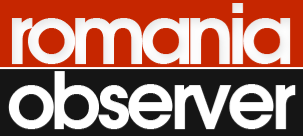Almost 30% of the Romanian population is still exposed to the risk of poverty and the people have to be helped to get together with the others who benefitted from spectacular growth over the last years of the country said on Monday, Cristian Nacu, Senior Country Officer for Romania and Moldova at the International Finance Corporation (IFC).‘I am not comfortable with the pessimistic tone, how to put it, that I have heard over the last months as, we should not forget, Romania’s economy has performed very well over the last twenty years. We have the most rapid rhythm of convergence (…). Growth of almost 4% on average for 20 years is unheard of. I don’t hink that there are many countries in the world which could boast with such growth. But it was not done equally. There is still a large part of the population, over 30% of the population living in the rural area. There are still parts of the population who were neglected or who could not develop at the same speed. This is the only thing that we have to do and the purpose of the World Bank as a Group, thing which was reflected in September as well last year when we approved the next strategy for the next five years, is tha together with the government, together with the programmes established by the European Union make these priorities take place in Romania’ said Cristian Nacu, at the conference ‘The Financial-banking Market’ event organized by newspaper Bursa.He mentioned that IFC finances the private sector in the countries where the institution is present as a group, while the World Bank finances the government.''' IFC's portfolio in Romania is the ninth largest in the world, one of the largest in IFC, USD 2.2 billion. And most of this financing is green finance, climate finance, so we are also one of the largest providers of climate finance'', explained Cristian Nacu. For the financial banking sector, IFC uses several instruments, and mostly over the last years there were used instruments of the kind MREL or Basel III Tier 2.''We have a study done last year, if I'm not mistaken, in which we calculated Romania's needs to reach the net zero target in 2050. The need is absolutely fascinating, more than 350 billion dollars needed to invest in Romania's economy to reach the net zero target in 2050. Of this 350 billion, only a third can come from public funding, either state or European. The rest will have to come from the private sector. So, through financial, banking institutions, this funding will have to be channelled into the real sector in order to bring about the changes that will lead to the net zero goal. So the financing needs going forward are huge. What we lack or what we want to have is stability, reform, so that the economy will continue to be viable'', Cristian Nacu added.

